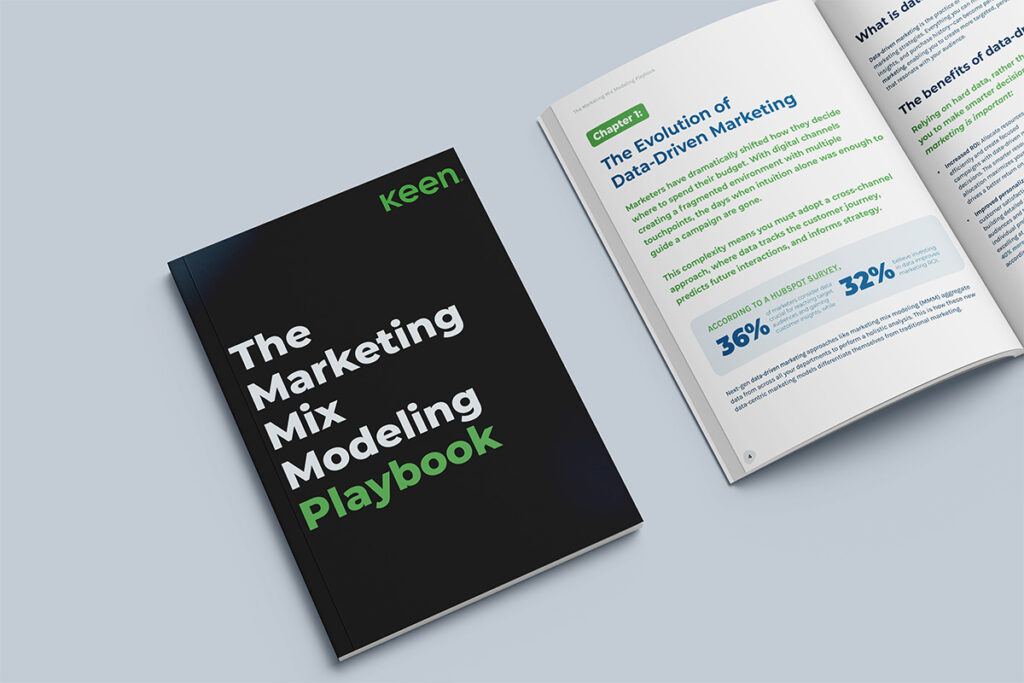The marketplace is facing a never before seen combination of high inflation and recession-like conditions, so it’s no secret that small and big brands alike are weathering a tough economic climate. However, because increasing input costs are driving the need for increased pricing in order to maintain profitability, smaller brands are getting hit harder. As a result, they need to pivot their pricing and value strategies in order to stay competitive and relevant.
In the fourth installment of our interview series, ReveNew, Keen CEO Greg Dolan sat down with Bill Mayer, executive-in-residence at the private equity firm of Warburg Pincus, to discuss why thinking beyond the recession when making spend decisions can help smaller brands drive long-term value and better position themselves for future leadership opportunities in the market.
Here are three big takeaways you don’t want to miss.
Understand how and where your dollars are working
Inflation costs have hit everything from raw materials to transportation wages to SG&A. And, because it has been so widespread, where marketers have looked to other solutions in the past to try and cut costs, such as ingredient swapping or package downsizing, they must now also use pricing action to come close to maintaining margins.
Smaller brands do not have the same scale and leverage with retailers as a lot of the bigger brands nor do they have the elasticity models, which can make it difficult to justify price increases. But ultimately, they need to walk in with the same data that shows strategic steps they are taking to offset these issues and that includes looking at things from a cost or procurement perspective (less transport volume, more automation, etc.). Decision makers also need to start paying more attention to the non-working dollars as they build out their strategies in the face of certain budget cuts.
Pricing action is going to happen, but in addition, marketers should look at costs and change how that spend actually works from a cost perspective. The bottom line is you need to really understand your spending and whether or not it is working in the right way for your brand. Because if you don’t understand that, then what you are really putting your dollars against may not be generating the type of returns you’re looking for.
Use data to spend your money in the most effective channels
The problem brand decision makers face is threefold: maintaining shelf presence while also maintaining costs and some kind of trajectory in terms of revenue growth. It’s necessary to look at the effectiveness when considering where each of the spends are going and how you can quickly test, learn, and adapt for where you might want to go. And then, once you have the testing and data honed to support the business, it essentially comes down to being flexible and willing to shift your investment into those arenas while maintaining the agility to pivot as needs and situations arise.
Brands must also take into account the shift in the customer journey as people look not just across platforms but in them as well, and what that means for their strategy. Marketers need to have the chance to move across all of the platforms and decide whether or not they want to have their brand working there. The key will be understanding what those returns are giving to you by channel, and then really trying to push the overall media working dollars towards those places as quickly and as collectively as you can.
Your margins will ultimately impact how much you can spend behind the business. Then it’s about making sure you are spending that money in the right way. A big brand generally has a lot more to spend, so they can put their bets across a lot of different places. But a smaller brand typically has to be more selective and careful. And because they can’t afford to be wrong, a little bit of spend to support a system that can give them the right answers with confidence is crucial.
Consider your value beyond the recessionary market
In a lot of ways, some of the smaller brands are the ones really trying to drive innovation in the marketplace. There are varying estimates of how long this recessionary type environment could last, but pulling back on certain investments means that you are potentially ceding strategic leadership by driving the category to other competitors. Smaller brands recognize this and are trying to invest as best they can as long as they can afford to do it, because they’re usually the ones disrupting the categories.
Companies are going to find themselves in a better competitive position when the economy recovers if they maintain their spend, investment, and R&D innovation through difficult periods. This holds true for businesses of all sizes. If bigger brands pull back and there is a strong number two, or some of the smaller brands now have the ability to get a higher share of the voice, it could be problematic in the post-recession market. Essentially, whatever your position, it’s imperative that you think about forward trajectory because not doing so may wind up seeding leadership to someone else while doing so could create a new opportunity to lead.
As brands are trying to justify price increases and stay relevant to a consumer, the conversations being had are going to center more around value than they have in some time. Even premium brands understand that a certain gap has to exist between competitors and private labels in terms of where you are on the shelf, and not being in that range will hurt from a demand perspective. Being able to communicate the value relative to the price is going to be crucial. Especially because the retail brands and private labels will most likely grow share over the next couple of years at the expense of brands.
Make decisions now that drive long-term value
Though daunting, this is a time period that will pass, and how you invest now will set you up for what comes after. In a lot of ways, what you do could make or break where you’re going long term, so you don’t want to be shy, but prudent. It’s necessary to know where you’re investing and make sure you understand the returns.
For brands to continue to operate–and hopefully grow–in a difficult environment, make sure you’re continuing to invest–to build the business, the brand, the equity that you’re going to need. And also continuing to invest in how you’re going to differentiate yourself in the marketplace, and how you’re going to grow your category and focus on continuing to be a leader.
Having a strong brand in this market is going to lead to the equity that gives the pricing power that helps maintain the margins, and gives you all the dollars you need to invest. But you don’t have to be a big business to make this happen. By pivoting some of their pricing and value strategies and providing data that demonstrates their return on every dollar invested, smaller companies can still position themselves as big players in the marketing world, both through the recession and beyond.
Keen to learn more? Check out the interview here.





